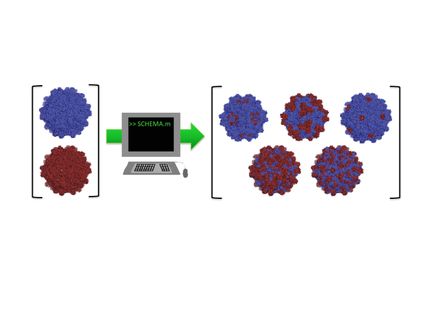Hydrogels provide scaffolding for growth of bone cells
Hyaluronic hydrogels developed by Carnegie Mellon University researchers may provide a suitable scaffolding to enable bone regeneration. The hydrogels, created by Newell Washburn, Krzysztof Matyjaszewski and Jeffrey Hollinger, have proven to encourage the growth of preosteoblast cells, cells that aid the growth and development of bone.
Currently, physicians are able to treat patients with damaged bone tissue, like those who have bone fractures that fail to heal, using demineralized bone matrix, a biological material obtained from cadavers. Demineralized bone matrix is rich in growth factor proteins which signal bone cells in the area to multiply and form complex bone tissue, while other proteins in the matrix regulate the activity of the growth factors. Demineralized bone matrix is in limited supply, and because it comes from a human donor, there is a risk of transmitting viruses to the recipient.
"Tissue engineering is an exciting field. We're creating solutions to problems that can significantly impact people's quality of life," said Washburn, an assistant professor of chemistry and biomedical engineering at Carnegie Mellon. "These gels have great promise in not only regenerating bone, but serving as a gene therapy delivery system."
Members of the Washburn lab have been developing synthetic alternatives to demineralized bone matrix. In the work being presented today, they created a flexible hydrogel using biologically active and degradable hyaluronic acid. Hydrogels, which are considered to be the state-of-the-art in tissue design, are made from polymers that swell in water to form a gel-like material. They interact with growth factors much like demineralized bone matrix does, providing scaffolding for bone cells to proliferate and form new tissue. The researchers found that, in vitro, the hydrogels promoted cell proliferation, differentiation and mineralization of pre-osteoblast cells.
Further research by the group has created a hybrid hydrogel that incorporates a nanogel structure. This new hydrogel promotes the differentiation of cells, much like the hyaluronic acid gel while also releasing nanogels in a controlled and targeted manner. The researchers hope that this structure could be used to partner tissue engineering with gene therapy.
Most read news
Topics
Organizations
Other news from the department science
These products might interest you

Kjel- / Dist Line by Büchi
Kjel- and Dist Line - steam distillation and Kjeldahl applications
Maximum accuracy and performance for your steam distillation and Kjeldahl applications

AZURA Purifier + LH 2.1 by KNAUER
Preparative Liquid Chromatography - New platform for more throughput
Save time and improve reproducibility during purification

Get the analytics and lab tech industry in your inbox
By submitting this form you agree that LUMITOS AG will send you the newsletter(s) selected above by email. Your data will not be passed on to third parties. Your data will be stored and processed in accordance with our data protection regulations. LUMITOS may contact you by email for the purpose of advertising or market and opinion surveys. You can revoke your consent at any time without giving reasons to LUMITOS AG, Ernst-Augustin-Str. 2, 12489 Berlin, Germany or by e-mail at revoke@lumitos.com with effect for the future. In addition, each email contains a link to unsubscribe from the corresponding newsletter.





















































